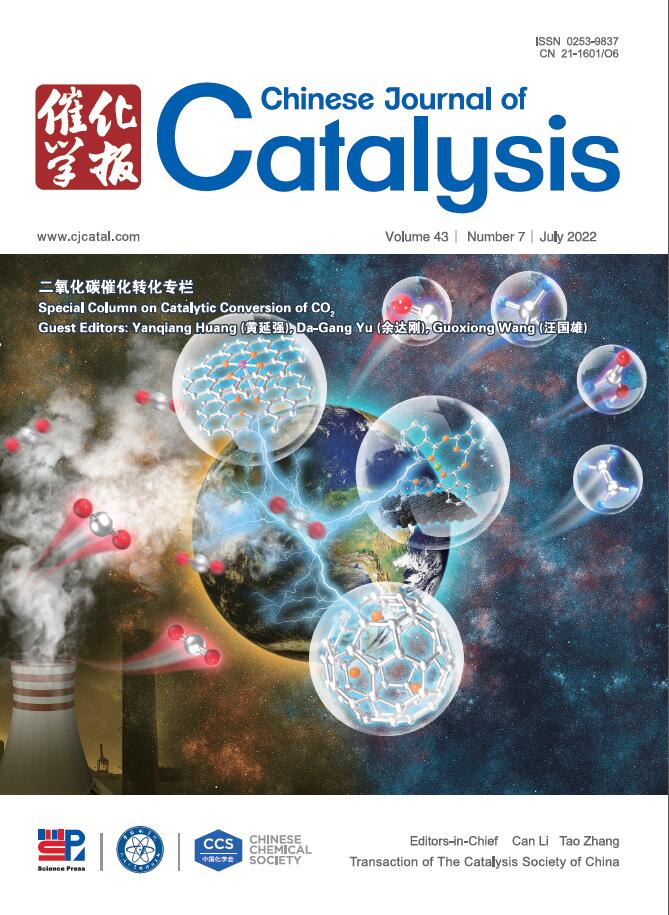Dual-metal synergy unlocking ROS-free catalysis for rapid aerobic oxidation of 5-hydroxymethylfurfural at room temperature
IF 15.7
1区 化学
Q1 CHEMISTRY, APPLIED
引用次数: 0
Abstract
Clean catalytic oxidation has a broad prospect in the modern chemical engineering and energy chemistry fields. However, unexpected over-oxidation and disruptive degradation are frequently induced by excessive reactive oxygen species (ROS). Herein, we reported a new ROS-free approach to effectively drive O2 to be activated into highly reactive surface peroxo species through enzyme-mimicking mechanism. Benefiting from the dual-metal synergy effect between Cu and Co active sites, ROS (H2O2 and OH•) is generated in situ while further scavenged completely into surface peroxo species, which gives rise to very high selectivity and extremely high carbon balance. For example, the CuCo/N-C catalyst affords >99.8% conversion and 94.5% selectivity to 2,5-furanedicarboxylic acid at 25 °C for 6 h in the aerobic oxidation of biomass platform 5-hydroxymethylfurfural. Moreover, it achieved exceptional performance in the oxidation of a variety of hydroxyl compounds to organic acids with high yields (89.9%–99.5%) at a mild temperature (25–40 °C). This exploration introduces an innovative clue for emulating enzyme catalysts, thereby enriching our comprehension and advancement of biologically inspired catalytic oxidations.
求助全文
约1分钟内获得全文
求助全文
来源期刊

Chinese Journal of Catalysis
工程技术-工程:化工
CiteScore
25.80
自引率
10.30%
发文量
235
审稿时长
1.2 months
期刊介绍:
The journal covers a broad scope, encompassing new trends in catalysis for applications in energy production, environmental protection, and the preparation of materials, petroleum chemicals, and fine chemicals. It explores the scientific foundation for preparing and activating catalysts of commercial interest, emphasizing representative models.The focus includes spectroscopic methods for structural characterization, especially in situ techniques, as well as new theoretical methods with practical impact in catalysis and catalytic reactions.The journal delves into the relationship between homogeneous and heterogeneous catalysis and includes theoretical studies on the structure and reactivity of catalysts.Additionally, contributions on photocatalysis, biocatalysis, surface science, and catalysis-related chemical kinetics are welcomed.
文献相关原料
公司名称
产品信息
麦克林
Melamine
阿拉丁
5-hydroxymethyl-2-furancarboxylic acid
阿拉丁
2,5-diformylfuran
阿拉丁
2,5-Furandicarboxylic acid
 求助内容:
求助内容: 应助结果提醒方式:
应助结果提醒方式:


